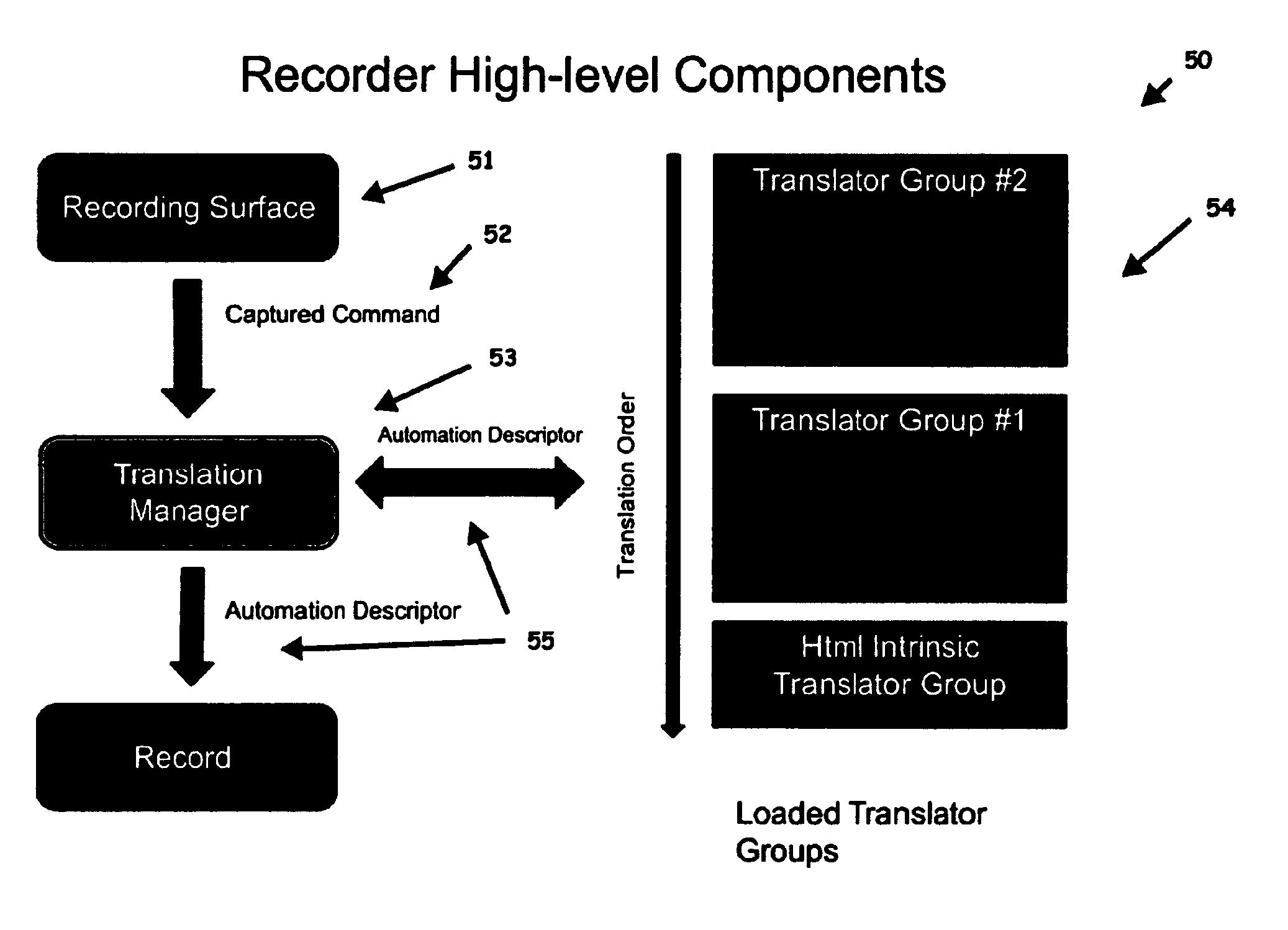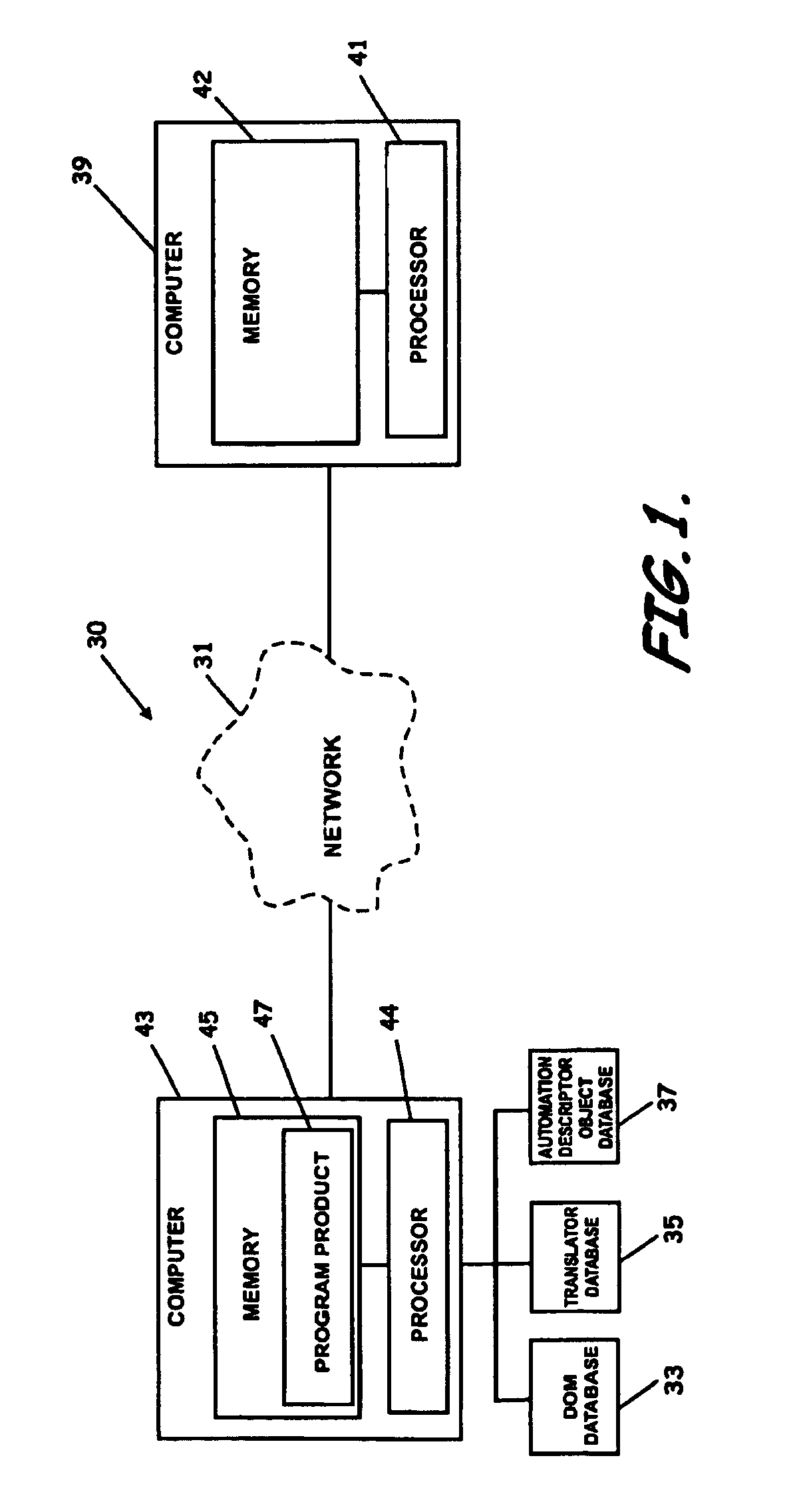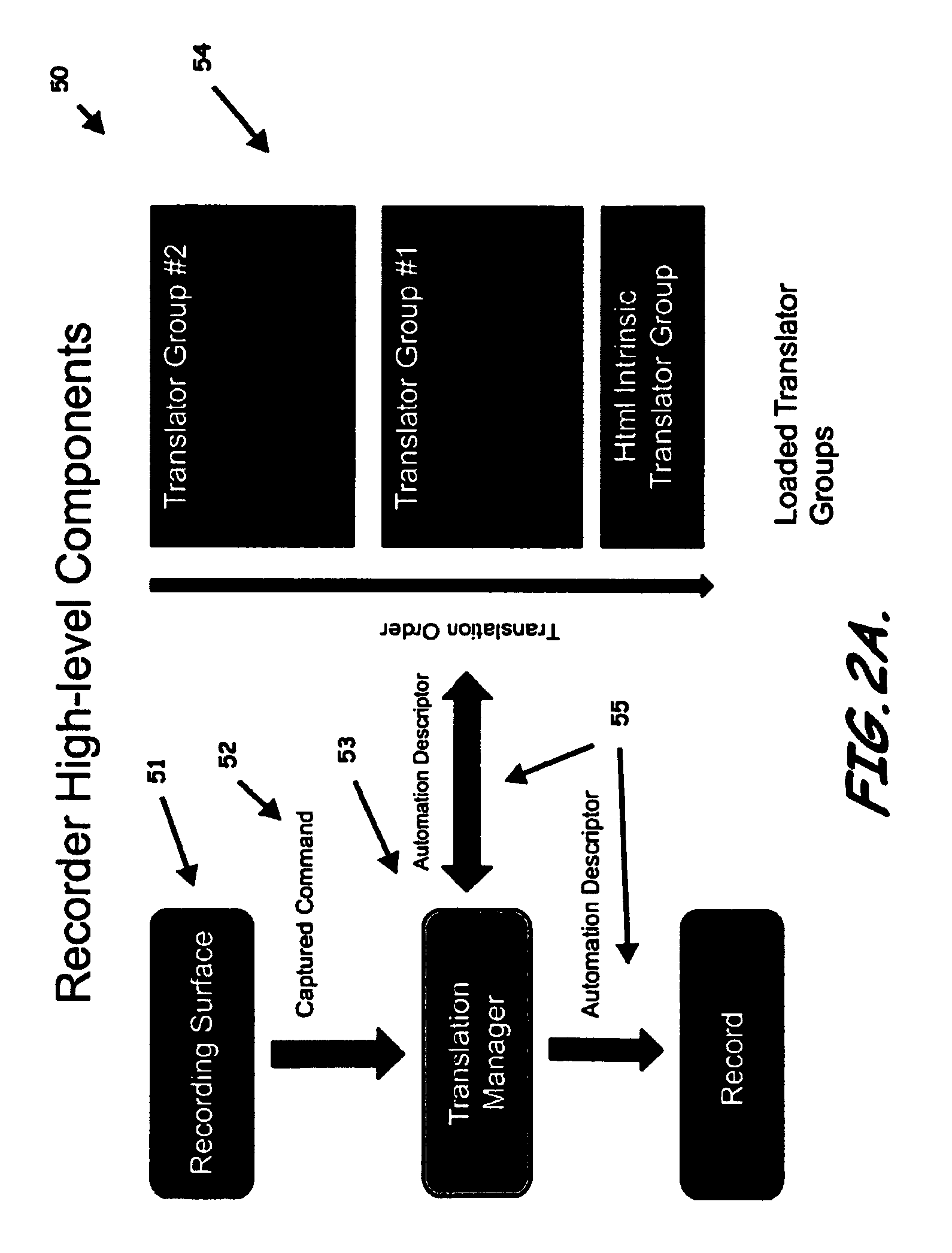System, program product, and methods to enable visual recording and editing of test automation scenarios for web application
a test automation and web application technology, applied in the field of software testing, can solve the problems of affecting the quality of software they sell, affecting the success rate of their business, and generally the most expensive, and achieve the effect of easy automation of complex scenarios and easy automation of applications
- Summary
- Abstract
- Description
- Claims
- Application Information
AI Technical Summary
Benefits of technology
Problems solved by technology
Method used
Image
Examples
example 1
[0087]As shown in FIG. 5, when the “get selected date” button 91 is clicked, the selected date in the calendar (here, Dec. 1, 2008) is displayed in the text box 93. In order to record an automated script using embodiments of the system 30, after causing the application testing program product 47 to be invoked (referred to as launching the GUI), the user can navigate the displayed structure (calendar) to perform the following:
[0088]1. Select December 1st element 65 in the calendar component / structure 63.
[0089]2. Click the “Get Selected Date” button 91.
[0090]3. Verify that the selected date in the text box 93 is actually “Dec. 1, 2008.”
[0091]Specifically, as perhaps best shown in FIG. 5, if the user clicks on the December 1st element 65 and then clicks on the “Get Selected Date” button 91, the first two simple actions are automatically recorded as shown in the action description section 95 of the illustrated graphical user interface (GUI). To record the last step (the validation step)...
example 2
[0094]In this example, the user now wants to also verify that the calendar of FIG. 4 is showing “December 2008.” That is, the user wants to verify that “December 2008” is showing in the table 97 that represents the calendar component / structure 63. The user first enables the Automation Overlay Surface (“AOS”) 51 and hovers over “December 2008” and then, for example, right-clicks “December 2008.” The Context Sensitive Quick Tasks are shown (see FIG. 12) and under the “Quick Tasks” menu 75 section of the context menu 73. A set of custom verification tasks that can be recorded are also shown. According to an embodiment of the system 30, the “Quick Tasks” are generally the relatively simple and / or common (default) tasks selected for inclusion as being those that users usually are most likely to want to record against the specific type of target element 65 selected by the user. That is, the user beneficially can simply selects the default “Verify . . . ”“Text contains ‘December 2008’” and...
example 3
[0095]In this example, the user can now use the extensibility model provided by an embodiment of the present invention to abstract out the calendar component / structure 63 shown in the previous two examples to perform recording and verification at a higher-level abstraction without the need for the end-user to drill down and understand the underlying markup of the calendar control shown in Appendix 1. The previous two examples illustrated recording against the atomic elements 65 that are parts of the complex markup of the calendar structure 63.
[0096]The example demonstrates abstracting and enabling the following three high-level actions, verification and synchronizations that are intrinsic to the calendar component 63:[0097]i. Select a Date.[0098]ii. Verify selected year is a leap year.[0099]iii. Wait for the selected year to be a leap year.
[0100]Performing the actions above by targeting the raw atomic elements 65 that make up the calendar is a tedious task and requires intimate know...
PUM
 Login to View More
Login to View More Abstract
Description
Claims
Application Information
 Login to View More
Login to View More - R&D
- Intellectual Property
- Life Sciences
- Materials
- Tech Scout
- Unparalleled Data Quality
- Higher Quality Content
- 60% Fewer Hallucinations
Browse by: Latest US Patents, China's latest patents, Technical Efficacy Thesaurus, Application Domain, Technology Topic, Popular Technical Reports.
© 2025 PatSnap. All rights reserved.Legal|Privacy policy|Modern Slavery Act Transparency Statement|Sitemap|About US| Contact US: help@patsnap.com



